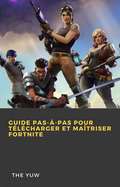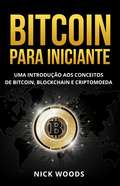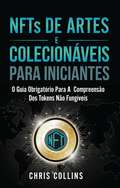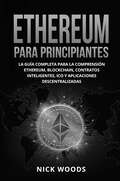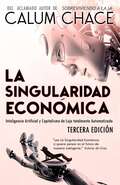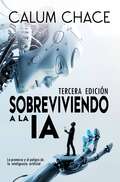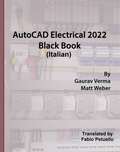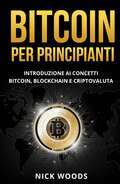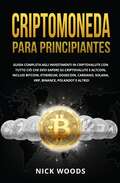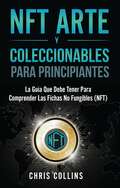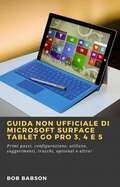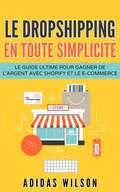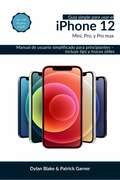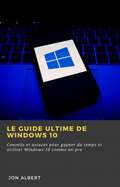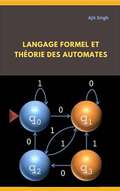- Table View
- List View
Ottieni una rendita passiva con Quora e lascia il tuo lavoro: Come ottenere redditi a sette cifre online (Fare soldi online libro 1)
by Marcus PfeifferVorresti fare soldi online? Vorresti guadagnarti da vivere da casa, eppure per qualche ragione hai difficoltà e non guadagni abbastanza? Credimi, alcuni anni fa mi trovavo nella tua stessa situazione. Ho cercato a ogni angolo del world wide web e ho provato a capire come fare soldi sulla rete, ma non ho fatto un centesimo. Peggio: ho sprecato un mare di denaro in corsi, pubblicità, siti web, libri e investimenti sbagliati. Fortunatamente un giorno mi sono imbattuto in un metodo che mi ha aiutato a ottenere una rendita passiva. Però, non mi fraintendere: passiva non significa che non ci sia da lavorare per avere profitti. Significa solo che una volta fatto il lavoro i soldi arriveranno in un flusso continuo, senza una tua partecipazione attiva o particolarmente attiva. Tuttavia finché non hai raggiunto questo livello, in cui i soldi semplicemente arrivano da soli, devi lavorare duramente, e non poco. In questo libro ti mostrerò l’approccio che io ho usato per fare una fortuna. E ti prometto che, se lavorerai duramente come richiesto, arriverai a un reddito a sette cifre in pochissimo tempo.
Guía de desintoxicación digital: Cómo vencer la adicción a las redes sociales
by Gary RandolphAunque las redes sociales son una gran herramienta para comunicarse con los amigos y la familia, y para adquirir conocimientos e información, su uso sin límites no es bueno para la salud mental. Hoy en día las personas se han vuelto adictas a las redes sociales y también la actividad física que realizan ha disminuido. Si te has vuelto adicto a las redes sociales y quieres cambiar tus hábitos cotidianos, esta guía es para ti. Esta guía electrónica describe el proceso completo de Desintoxicación Digital. Si quieres vencer la adicción a las redes sociales, esta guía es para ti. En esta guía aprenderás: - Las diez mejores maneras de deshacerse de la adicción a las redes sociales - Cuentas que debes eliminar - Hacer un uso mínimo de las cuentas - Cómo limitar tu lista de amigos - Uso mínimo del dispositivo - Reorganizar tus prioridades - Tener tiempo libre para tus relaciones reales - Pasos a seguir - ¡Y mucho más! --> Desplácese hasta la parte superior de la página y seleccione "Añadir al carrito" para comprar inmediatamente Aviso de responsabilidad: Este autor y/o el/los propietario/s de los derechos de autor no aseguran, ni prometen, ni garantizan la exactitud, integridad o adecuación del contenido de este libro, y no se hacen responsables de los errores u omisiones en su contenido. Este producto es sólo para uso de referencia. Por favor, consulte a un profesional antes de aplicar cualquier medida sobre los temas incluidos en este libro.
Guide pas-à-pas pour télécharger et maîtriser Fortnite
by The Yuw*GUIDE NON OFFICIEL* Vous voulez dominer le jeu et vos adversaires ? Vous avez des difficultés à obtenir des ressources ? Vous voulez les meilleurs objets ? Voulez-vous apprendre à télécharger et installer le jeu ? Si c’est le cas, nous pouvons vous aider. Nous vous guiderons pas-à-pas à travers le jeu, vous confierons des stratégies et astuces de professionnels ainsi que tous les secrets du jeu. Ce que vous trouverez à l’intérieur : - Comme télécharger et installer le jeu. - Des stratégies de professionnels. - Des trucs et astuces. - Les zones atterrissage. - Les armes. - Des conseils. - Comment battre les adversaires. - Comment dominer le multi-jeu. - Les combats et mouvements. - Les constructions. - Des secrets, astuces, triches, et stratégies utilisés par les joueurs professionnels. - Comment amasser des ressources. - ET BIEN PLUS ! Alors, qu’attendez-vous ? Une fois que vous aurez notre guide, vous apprendrez à dominer le jeu en un rien de temps ! Obtenez des conseils professionnels dès maintenant. –> Rendez-vous en haut de la page pour ajouter l’ebook à votre panier et l’acheter immédiatement. Avertissement : Ce produit n’est pas associé, affilié, soutenu, certifié ou sponsorisé par le titulaire original des droits d’auteur.
Bitcoin para Iniciantes: Uma Introdução aos Conceitos de Bitcoin, Blockchain e Criptomoeda
by Nick WoodsBitcoin para Iniciantes por Nick Woods Uma introdução aos conceitos de Bitcoin, Blockchain e Criptomoeda Bitcoin é uma fascinante moeda descenteralizada da nova era que só se encontra disponível online e permite que o usuário se mantenha um tanto quanto anônimo. É uma moeda digital que pode ser usada por qualquer pessoa conectada à Internet e é independente de qualquer região. Você mantém o Bitcoin em uma "carteira eletrônica", da mesma forma que coloca seu dinheiro na carteira de couro ou no banco. Tudo isso é operado eletronicamente e não há moeda fiat (papel) envolvida. Este livro irá ajudá-lo(a) a entender tudo o que você precisa saber sobre Bitcoin, Blockchain e Criptomoedas, incluindo os benefícios e desafios da nova tecnologia, e eu irei fornecer a você um guia passo a passo para alcançar um nível mais alto de compreensão para que possa se sentir confortável ao se envolver com o Bitcoin e outras criptomoedas.
NFTs de Artes e Colecionáveis para Iniciantes: O Guia Obrigatório para a Compreensão Dos Tokens Não Fungíveis (NFTs)
by Chris CollinsNFTs de Artes e Colecionáveis para Iniciantes por Chris Collins O guia obrigatório para compreender os tokens não fungíveis (NFTs) Este guia fala sobre o que são os NFTs e também fornece um breve histórico de seu surgimento. Você está à procura de aprender como poderá lucrar com a revolução NFT? Você acabou de descobrir sobre os NFTs? Você quer participar desta onda, seja como artista, jogador ou músico? Você está achando difícil encontrar todas as informações no mesmo lugar? Se é isso que você quer, então continue lendo! NFTs de Artes e Colecionáveis para Iniciantes oferece informações abrangentes sobre esta tendência recente e lucrativa. Este guia fala sobre o que são NFTs e também fornece um breve histórico de seu surgimento. Depois de aprender sobre os NFTs, você também encontrará informações sobre os tokens Ethereum. Esses são os padrões que unem o sistema de colecionáveis digitais. O funcionamento interno dos NFTs, juntamente com sua importância e valor, também são abordados neste guia detalhado. As áreas de aplicação e usos proporcionarão o conhecimento do exato ponto em que você pode entrar nesta tendência digital. Além disso, as informações neste livro também listam os principais mercados e o processo de criação de NFTs. Vários mitos sobre NFTs são também desmascarados neste livro. Arte e jogos são as áreas mais importantes que estão surgindo dentro da onda NFT. Isso é particularmente verdadeiro para a indústria de jogos, pois permite que pessoas de todas as idades aprendam essa tecnologia de uma maneira divertida. Neste livro, você descobrirá: Uma maior compreensão sobre NFT e Ethereum Introdução aos termos-chave Riscos envolvidos História e surgimento de NFTs Padrões do Token Ethereum Como funcionam os NFTs Por que os NFTs têm valor Usos dos NFTs Tokens Não Fungíveis, baseados em Blockchain O Merca
Ethereum Para Principiantes: La Guía Completa Para Comprender Ethereum
by Nick Woods¿Está buscando aprender cómo puede sacar provecho de la revolución de las criptomonedas? ¿Has escuchado sobre Ethereum últimamente en las noticias y parece que no puedes entender qué es Ethereum? ¿Se pregunta cómo puede comenzar a invertir en Ethereum pero no sabe realmente qué es y tiene dudas sobre invertir en algo que no comprende? ¿Desearía poder entender Ethereum pero tiene miedo de que sea demasiado complejo y complicado? Si esto te suena, ¡sigue leyendo! Ethereum es una moneda descentralizada fascinante de la nueva era que solo está disponible en línea y permite al usuario ser algo anónimo. Entre las miles de criptomonedas, Ethereum tiene, quizás, el potencial de crecimiento más considerable. ¡La gran cantidad de proyectos construidos sobre la cadena de bloques Ethereum es prueba suficiente de que Ethereum se dirige a la luna! Si está listo para comenzar a comprender sobre Ethereum, blockchain y criptomonedas y aprender cómo puede participar en esta oportunidad innovadora, no busque más.
La Singularidad Económica: Inteligencia Artificial y Capitalismo de lujo totalmente automatizado
by Calum ChaceLa singularidad económica tendrá lugar en el momento en que la mayoría de las personas no pueda encontrar empleo, porque las máquinas puedan hacer todo lo que los humanos pueden hacer por dinero a un menor costo, más rápido y mejor que ellos. Algunos dicen que esto nunca sucederá, pero la mayoría de los profesionales de la IA creen que sí, aunque no se ponen de acuerdo cuándo. La inteligencia artificial (IA) ya sobrepasa a los humanos en absorber y procesar información. Los robots se están volviendo cada vez más diestros, flexibles y seguros (excepto los militares). La IA es nuestra tecnología más poderosa y debemos comprenderla. Esta tercera edición del libro más vendido de Calum Chace se ha actualizado y ampliado sustancialmente. Sostiene que la singularidad económica es el desafío más importante que enfrentará la humanidad en la primera mitad del siglo XXI, y también su oportunidad más interesante. Los coches autónomos y los teléfonos inteligentes con los que puedes conversar pueden ser los canarios en la mina de carbón, lo que brinde una llamada de atención para todos aquellos que aún dudan de su inminencia. Todos los trabajos se verán afectados, desde los empleos de comida rápida hasta abogados y periodistas. La popular creencia de que la Renta Básica Universal es la solución es sólo parcialmente correcta. Probablemente vamos a necesitar un sistema económico completamente nuevo, y pronto deberíamos comenzar a planificar para prepararnos para la Singularidad Económica. Chace sostiene que el resultado puede ser muy bueno: un mundo en el que las máquinas hacen todos los trabajos aburridos y los humanos hacen prácticamente lo que les place. Pero advierte que existen grandes riesgos, que solo podemos evitar estando alerta a los posibles futuros y planificando cómo evitar los negativos. Chace ha estado escribiendo sobre IA desde 1980 y ha escrito dos libros de no ficción muy vendidos y también dos novelas sobre el tema. En 201
Guide D’utilisation de L’application Snapchat
by Ken RogersUn guide détaillé sur l'utilisation et la maîtrise de Snapchat - Messagerie - Paramètres et configuration - Bitmojis - Snaps, Texte ajouté, Enregistrement, Envoie et Filtres - Création de la Story - Stories organisées - Transfert d'argent et plus encore ! Faites défiler vers le haut de la page et cliquez sur Ajouter au panier pour acheter instantanément. Avis de non-responsabilité : Cet auteur ou ce(s) titulaire(s) de droits ne fait aucune affirmation, promesse ou garantie concernant l'exactitude, l'exhaustivité ou l'adéquation du contenu de ce livre, et décline expressément toute responsabilité pour les erreurs et omissions dans le contenu. Ce produit est destiné seulement à une utilisation de référence.
Fiebre De Marketing Influencer en Clubhouse: Claves Para Dominar La Nueva Red Social
by J. L. FehrLos influencers no son los únicos que están promocionándose en Clubhouse, la red social de audio. Y pese a su popularidad, muchos ni siquiera han oído de ella. Así que, ¿por qué deberías estar allí, y cuál es la mejor forma de aprovecharla? El espacio entre nuestras orejas es uno de los sitios más íntimos que podemos concederle a otras personas, y las voces pueden transmitir una vida entera de experiencias en un instante. El volumen, el registro, el tono, la dicción, y las palabras mismas; todos éstos elementos dejan impresiones indelebles. Clubhouse da lugar a las interacciones entre personas más profundas, cuando se la compara con el resto de las redes sociales. Y aún así, es preciso aprender a usar correctamente la app para convertirla en una poderosa y nóvel herramienta de comunicación. Este libro se escribió para ayudarte a aprender cómo usar esta plataforma, para que puedas promocionarte de la misma forma que lo hacen los influencers más notables.
Sobreviviendo a la IA: La promesa y el peligro de la Inteligencia Artificial
by Calum ChaceEste es el siglo de las dos singularidades: la singularidad económica (desempleo tecnológico) y la singularidad tecnológica (la explosión de la inteligencia). Ambas presentan enormes oportunidades y enormes desafíos. Si las manejamos con éxito, nuestro futuro como especie será más que maravilloso. Si fallamos, podría ser miserable, y quizás breve. El impulsor es la inteligencia artificial (IA), la tecnología más poderosa de la humanidad. El software que resuelve problemas y convierte los datos en valiosa información ya ha revolucionado nuestras vidas, y la revolución se está acelerando. En 2015, la inteligencia artificial ocupaba las primeras planas, y con justa razón. Se está acercando a un punto de inflexión en el que las máquinas pueden realizar mejor que nosotros muchas tareas que antes se consideraban exclusivamente humanas. Los sistemas de aprendizaje profundo están a punto de reconocer imágenes y comprender el lenguaje natural mejor que los humanos. El argumento de este libro es que debemos monitorear los cambios que están ocurriendo y adoptar políticas que fomenten los mejores resultados posibles. La gama de posibles resultados es amplia, desde los terribles hasta los maravillosos, y no están predeterminados. Serán seleccionados en parte por suerte, en parte por su propia lógica interna, pero en parte también por las políticas adoptadas en todos los niveles de la sociedad. La automatización y la superinteligencia son los dos desarrollos que ya podemos prever causarán grandes impactos. La automatización podría conducir a una singularidad económica y la evolución a un tipo de economía completamente diferente. Si nos equivocamos, una élite podría poseer los medios de producción y reprimir al resto de nosotros en un autoritario régimen tecnológico distópico. Si lo hacemos bien, podríamos disfrutar de una economía de abundancia radical, donde nadie tiene que trabajar para ganarse la vida, y todos somos libres para divert
Dispositifs Formidables (Comment faire... #28)
by Owen JonesDispositifs Formidables Quelques dispositifs rétro pour le mec sympa Les articles de ce livre électronique sont des suggestions et des conseils sur les dispositifs, les outils intéressants pour les adultes et d'autres sujets similaires, mais le livre doit être considéré comme un tout. Le texte est composé à plusieurs niveaux : j'espère que vous trouverez ses informations utiles, et en outre, en l'achetant, vous pourrez également utiliser son contenu dans vos propres publications.
Commentaire jailbreaker (craquer) Roku?: Déverrouiller Roku (Roku Stick, Roku Ultra, Roku Express, Roku TV) avec le guide détaillé de kodi
by Jonathan GatesUn guide pas-à-pas sur comment exécuter Kodi sur tous les appareils Roku. La meilleure caractéristique des appareils Roku est que vous pouvez y exécuter Kodi. Cela vous permettra d’accéder à tout contenu que vous souhaitez, comme des émissions de télévision, de la musique et des films. Voici ce que vous apprendra ce guide : – Des connaissances sur les appareils Roku. – Comment excuter Kodi sur des appareils Roku. – Comment résoudre les problèmes rencontrés avec ces appareils. Profitez de l’accès aux films, à la musique et aux émissions de télévision --> Faites défiler vers le haut de la page et cliquez sur Ajouter au panier pour acheter instantanément Clause de non-responsabilité: Cet auteur et/ou le(s) titulaire(s) des droits ne font aucune revendication, promesse ou garantie quant à l’exactitude, l’exhaustivité ou l’adéquation du contenu de ce livre, et déclinent expressément toute responsabilité pour les erreurs et omissions dans le contenu qu’il contient. Ce produit a été prévu pour servir d’usage de référence personnel uniquement.
Guida alla Disintossicazione Digitale: Sconfiggi le dipendenze dai social media
by Gary RandolphSebbene i social media siano un ottimo strumento per comunicare con i tuoi amici, la tua famiglia, cercare conoscenze e informazioni, utilizzarli 24 ore su 24, 7 giorni su 7, non fa bene alla salute mentale. Oggi le persone sono diventate dipendenti dai social media e gli stessi hanno anche ridotto l'attività fisica delle persone. Se sei diventato dipendente dai social media e vuoi cambiare le tue preferenze sulla vita, questa guida fa per te. Questa guida ebook descrive il processo completo di disintossicazione digitale. Se vuoi sbarazzarti dalla dipendenza dai social media, questa guida fa per te. Questa guida ebook ti insegnerà: - I dieci modi migliori per sbarazzarsi della dipendenza dai siti social - Quali account devono essere cancellati - Come mantenere l'account con un utilizzo minimo - Come limitare la tua lista di amici - Come utilizzare al minimo il tuo dispositivo - Il riallineamento delle tue priorità - Come trovare tempo libero per le tue relazioni reali - I passi da compiere - & molto di più!!! --> Scorri fino alla parte superiore della pagina e fai clic su aggiungi al carrello per acquistare immediatamente
Come Disdire Il Tuo Abbonamento a Netflix Online: Questa guida ti insegnerà a disdire l'abbonamento o la prova Netflix in meno di un minuto!
by Dan Gaines-Passaggi dettagliati e facili da seguire -Risparmia tempo per capirlo da solo -Risparmia tempo senza dover passare ore a contattare l'assistenza -Annulla in pochissimo tempo senza problemi Fai clic sul pulsante "Acquista ora" per accedervi immediatamente! Disclaimer: Questo autore e/o il proprietario dei diritti non fanno rivendicazioni, promesse o garanzie in merito all'accuratezza, completezza o adeguatezza dei contenuti di questo libro e declinano espressamente la responsabilità per errori e omissioni nei contenuti all'interno. Questo prodotto è destinato al solo utilizzo come riferimento. Genere: COMPUTER / Hardware / Generale Genere secondario: COMPUTER / Hardware / Hardware di rete Lingua: Italiana Parole chiave: netflix, disdici, come fare, passaggi, prezzo, offerta, iscrizione, account, abbonamento, annuale, addebito, contatto, supporto, app, online Conteggio parole: 3000 Link libri: Amazon
AutoCAD Electrical 2022 Black Book (Italian)
by Gaurav VermaAutoCAD Electrical 2022 Black Book, la settima edizione del libro AutoCAD Electrical Black, è stata aggiornata in base ai miglioramenti di AutoCAD Electrical 2022. Seguendo la stessa strategia dell'edizione precedente, il libro segue una metodologia passo passo. Copre quasi tutte le informazioni richieste da uno studente per padroneggiare AutoCAD Electrical. Il libro inizia con le basi della progettazione elettrica, passa attraverso tutti gli strumenti relativi ai controlli elettrici e illustra esempi pratici di schemi elettrici e di progettazione di pannelli. Il capitolo sui Reports consente di creare e modificare report di componenti elettrici. Abbiamo anche discusso dell'interoperabilità tra Autodesk Inventor e AutoCAD Electrical, di cui l'industria ha bisogno in questi giorni. Sono stati aggiunti due allegati per spiegare i concetti di base della progettazione del pannello di controllo.
Bitcoin per Principianti: Un’introduzione al Bitcoin, Blockchain e Criptovalute
by Nick WoodsState cercando di imparare come poter guadagnare dalla rivoluzione del Bitcoin? Avete sentito parlare di Bitcoin ultimamente e non riuscite a capire cosa sia? Vi chiedete come potete iniziare a investire in Bitcoin, ma siete esitanti nell'investire in qualcosa che non capite? Vorreste essere in grado di capire il Bitcoin, ma avete paura che sia troppo complesso e complicato? State cercando una risorsa che vi aiuti a capire il Bitcoin, in modo da poter iniziare a investire in criptovalute senza paura? Se questo è il vostro caso, allora continuate a leggere! Bitcoin è un'affascinante valuta decentralizzata della nuova era che è disponibile solo online e permette all'utente di essere anonimo. È una moneta digitale che può essere utilizzata da chiunque sia collegato a Internet ed è indipendente da qualsiasi regione. Potete conservare iBitcoin in un "portafoglio elettronico", proprio come mettete i vostri soldi nel vostro portafoglio o in una banca. Tutto questo è gestito elettronicamente e non c'è denaro fiat (carta) coinvolto. Capire Bitcoin vi aiuterà a raggiungere tutti i vostri obiettivi investendo nella criptovaluta, non importa quanto grandi o piccoli siano. Indipendentemente da chi siete e da cosa volete realizzare, la base del Bitcoin è la stessa per tutti. Questo libro vi aiuterà a capire tutto quello che dovete sapere su Bitcoin, Blockchain e criptovalute, compresi i benefici e le sfide della nuova tecnologia. Vi fornirò una guida passo dopo passo per raggiungere un livello superiore di comprensione in modo che voi possiate sentirvi a vostro agio nell'essere coinvolto con Bitcoin e altre criptovalute. Non c'è mai stato un libro così facile nel suo approccio e così efficace per capire Bitcoin da un livello principiante. All'interno di queste pagine, scoprirete: Cos'è Bitcoin in dettaglio Perché Bitcoin è importante Confronto di Bitcoin con le valute Fiat<br
Criptomoneda para Principiantes: Guía Completa de Inversión en Criptomonedas.
by Nick Woods¿Está buscando aprender cómo puede sacar provecho de la revolución de las criptomonedas? ¿Has escuchado sobre Bitcoin, Ethereum y Dogecoin últimamente en las noticias y parece que no puedes entender qué son las criptomonedas? ¿Se pregunta cómo puede comenzar a invertir en criptomonedas, pero realmente no sabe qué es y tiene dudas sobre invertir en algo que no comprende? ¿Desearía poder comprender la criptomoneda, pero tiene miedo de que sea demasiado compleja y complicada? Si esto te suena, ¡sigue leyendo! Las criptomonedas son fascinantes monedas descentralizadas de la nueva era que solo están disponibles en línea y permiten al usuario ser algo anónimo. Con miles de criptomonedas disponibles, existen importantes potenciales de crecimiento. ¡La gran cantidad de proyectos construidos sobre estas cadenas de bloques es prueba suficiente de que la criptomoneda se dirige a la luna!
NFT Arte y Coleccionables: La Guía Imprescindible para Comprender Los Tokens No Fungibles (NFT)
by Chris Collins¿Está buscando aprender cómo sacar provecho de la revolución NFT? ¿Acaba de enterarse de las NFT? ¿Quieres unirte a la locura como artista, jugador o músico? ¿Le resulta difícil encontrar toda la información en el mismo lugar o simplemente es completamente confuso? Si esto te suena, ¡sigue leyendo! NFT Arte y Coleccionables para Principiantes ofrece, información completa sobre esta reciente tendencia rentable. Esta guía habla sobre qué son las NFT y también proporciona una breve historia de su aparición. Después de conocer las NFT, también encontrará información sobre los tokens Ethereum. Estos son los estándares que unen el sistema de coleccionables digitales. El funcionamiento interno de las NFT, junto con su importancia y valor, también se tratan en esta guía detallada. Las áreas de aplicación y usos le brindarán el conocimiento de áreas en las que puede ingresar en esta tendencia digital. Además, la información de este libro también enumera los principales mercados y el proceso de creación de NFT. En este libro también se desmienten varios mitos de las NFT. El arte y los juegos son las áreas más importantes que están surgiendo dentro de la moda de NFT. Esto es particularmente cierto para la industria del juego, ya que permite a personas de todas las edades aprender esta tecnología de una manera nueva y divertida.
Guida non ufficiale di Microsoft Surface Tablet Go Pro 3, 4 e 5: Primi passi, configurazione, utilizzo, suggerimenti, trucchi, optional e altro!
by Bob BabsonSei una persona che utilizza regolarmente Microsoft Surface? Ti piacerebbe imparare a utilizzare i dispositivi Microsoft Surface come gli smanettoni e risparmiare un sacco di tempo? Guida compatibile con tutte le versioni Go e Pro 2, 3 e 4. Se la tua risposta è sì, allora questa guida fa per te. Sapevi che il tuo dispositivo Microsoft Surface ha migliaia di funzioni che possono semplificarti la vita? Tuttavia, contiene tante funzioni nascoste, perciò non è molto semplice saper utilizzare sempre il dispositivo in modo ottimale. La guida ti spiegherà: -come configurare il dispositivo -come navigare su internet -le funzionalità del dispositivo -come risparmiare tempo -come risparmiare energie e svolgere lavori senza problemi -come utilizzare il tuo dispositivo come gli smanettoni -come gestire i problemi + E MOLTO ALTRO! Se vuoi imparare a utilizzare il tuo dispositivo come uno smanettone, questa guida fa per te. --> Torna in cima alla pagina e clicca subito Aggiungi al carrello per acquistare subito il libro Disclaimer: L'autore e/o il detentore della proprietà intellettuale non compie alcuna rivendicazione né rilascia alcuna promessa o garanzia in merito all'accuratezza, completezza o adeguatezza dei contenuti di questo libro e declinano espressamente la responsabilità su eventuali errori e omissioni nei contenuti proposti.
Le dropshipping en toute simplicité: Le guide ultime pour gagner de l'argent avec Shopify et le e-commerce
by Adidas WilsonLe Dropshipping est une méthode de vente au détail où les boutiques ne stockent pas réellement leurs produits. Lorsqu’un client achète un produit, le vendeur l'achète à une autre partie et l'expédie directement au client. Le commerçant ne manipule ni ne voit le produit. Le dropshipping diffère du modèle de vente au détail conventionnel en ce sens que, dans ce cas, le vendeur ne possède pas de stock. Il ou elle achète une commande à un tiers. Comme tout le reste, le modèle du dropshipping présente des inconvénients et des avantages. Vous avez besoin de moins de capital : c'est sans doute le plus grand avantage. Vous n'avez pas besoin de milliers de dollars pour lancer une boutique de e-commerce. Les détaillants conventionnels doivent disposer d'un capital énorme pour constituer leur stock. Dans le cas du dropshipping, vous n'achetez un produit que lorsqu'un client a passé une commande et effectué le paiement. Un investissement initial dans le stock n'est pas nécessaire. Facile à démarrer : une entreprise de e-commerce est beaucoup plus facile à gérer lorsque vous ne manipulez pas de produits physiques. Vous n'aurez pas à vous soucier d'un entrepôt, de l'emballage et de l'expédition, du suivi des stocks, de la gestion des retours, etc. Faibles frais généraux : puisque vous n'aurez pas à vous occuper d'un entrepôt ou à acheter des stocks, attendez-vous à de faibles frais généraux. Beaucoup de personnes gèrent une entreprise de dropshipping depuis leur bureau à domicile avec leur ordinateur portable et ne dépensent qu'environ 100 $ par mois. Les dépenses peuvent augmenter au fur et à mesure que votre entreprise se développe, mais elles resteront faibles. Emplacement flexible : si vous avez une connexion Internet, vous pouvez gérer votre entreprise de dropshipping de n'importe où.
Guía simple para usar el iPhone 12, Mini, Pro, y Pro Max: Manual de usuario simplificado para principiantes – incluye tips y trucos útiles.
by Dylan Blake Patrick Garner¿Eres un adulto mayor o alguien que busca una guía fácil paso a paso? Entonces, ¡no busques más! Si estás leyendo esto es porque tienes uno de los más recientes teléfonos insignia de Apple, y ahora que ya tienes esta belleza, es hora de darle buen uso a todo lo que te ofrece, usando un muy bien ilustrado manual de usuario que devela todos sus tips y trucos ocultos. Esta guía ha sido elaborada de forma especial para darte exactamente lo que necesitas, con muchos tips y trucos para ayudarte a familiarizarte con el iPhone 12, el iPhone 12 Mini, el iPhone 12 Pro y el iPhone 12 Pro Max. Si tienes un modelo de iPhone anterior, no tienes por qué sentirte excluido porque también hemos escrito esta guía pensando en ti.Los modelos iPhone 12 tienen incorporadas funciones que te podrían hacer agua la boca. Llevan incluido el nuevo y más rápido chip A14 Bionic, que ofrece una grandísima mejora en rendimiento. Son los primeros teléfonos móviles capaces de grabar vídeo con Dolby Vision en tiempo real, un formato de vídeo profesional. También incorporan pantallas OLED Super Retina XDR con una cubierta Ceramic Shield para mejorar la durabilidad y una protección contra caídas 4 veces mayor. También incorporan los cargadores inalámbricos MagSafe (un sistema de carga inalámbrica magnética) que es dos veces más rápido que los anteriores cargadores inalámbricos Qi. Con este libro podrás aprovechar al máximo todas las funciones y capacidades de tu dispositivo ¡y más! Una vez tengas este libro, aprenderás a: • Encender y configurar tu iPhone • Configurar tus servicios celulares • Instalar una tarjeta nano-SIM física • Configurar un plan de datos celulares con una tarjeta eSIM • Administrar tus planes celulares para SIM doble • Conectar tu iPhone a internet • Cambiar de un dispositivo Android a un iPhone • Administrar la configuración de tu Apple ID y iCloud en el iPhone • Activar y desbloquear tu iPhone •
The keys of success for MLM: The keys of success
by Vicente Cuenca"There is no riskier thing than not to take risk" A year ago, I was interviewing Mr. Francisco Javier Lopez Navarro, founding president of the international institute of Self- Employment. He is a successful entrepreneur, yet he wanted to know to improve his work. I was very surprised that this man came to me, since his company
Le guide ultime de Windows 10: Conseils et astuces pour gagner du temps et utiliser Windows 10 comme un pro
by Jon AlbertUn guide détaillé pour connaître les trucs et astuces de windows 10. Ce guide vous aidera à utiliser Windows 10 comme un pro, des trucs et astuces pour gagner du temps. Ce livre vous apprendra à : - Configurer l'explorateur Windows - Supprimer 'Bing' de microsoft edge - Configurer cortana - Prendre le contrôle de la mise à jour de Windows 10 - Se débarrasser de l'écran de connexion de Windows 10 - Désactiver le flash dans Edge Si vous voulez utiliser Windows 10 comme un Pro, alors ce livre est pour vous. --> Faites défiler jusqu'en haut de la page et cliquez sur ajouter au panier pour acheter instantanément Avis de non-responsabilité : Cet auteur et ou le(s) propriétaire(s) des droits ne font aucune réclamation, promesse ou garantie quant à l'exactitude, l'exhaustivité ou l'adéquation du contenu de ce livre, et rejette expressément toute responsabilité en cas d'erreur ou d'omission dans le contenu de celui-ci. Ce produit est destiné à un usage de référence uniquement.
Guía simple para usar el iPhone 13, Mini, Pro, y Pro Max: Manual de usuario simplificado para principiantes y adultos mayores- incluye tips y trucos útiles
by Dylan Blake¿Eres un ADULTO MAYOR o un PRINCIPIANTE? ¿Deseas sacarle el mejor provecho a tu iPhone? ¡Recibe la ayuda que necesitas con esta guía simplificada! Los nuevos modelos de iPhone 13 vienen repletos de nuevas funciones que puedes utilizar en tu día a día, y este manual de usuario es tu ticket para explorarlas. ¿Quieres usar la cámara de forma más eficiente? ¿Quieres configurar una ficha médica para emergencias? ¿O quieres hacer varias tareas básicas como enviar un mensaje de texto, hacer una llamada, llamar por FaceTime a un amigo, etc.? Entonces, esta práctica guía puede ayudarte con todo eso y mucho más. Al comprar este libro, aprenderás a: • Encender y configurar tu iPhone • Configurar tus servicios celulares • Instalar una tarjeta nano-SIM física • Configurar un plan de datos celulares con una tarjeta eSIM • Administrar tus planes celulares para SIM doble • Conectar tu iPhone a internet • Cambiar de un dispositivo Android a un iPhone • Administrar la configuración de tu Apple ID y iCloud en el iPhone • Activar y desbloquear tu iPhone • Usar gestos y trucos para modelos de iPhone con Face ID • Ajustar el volumen de tu iPhone • Cambiar los sonidos de alertas y las vibraciones de tu iPhone • Buscar configuraciones en tu iPhone • Ampliar el contenido de la pantalla de tu iPhone con Tamaño de pantalla • Abrir apps en el iPhone • Cambiar entre apps • Organizar tus apps en carpetas • Tomar una captura de pantalla o grabar la pantalla en tu iPhone • Bloquear o desbloquear la orientación de la pantalla en tu iPhone • Moverte por la pantalla de fotos de la cámara • Moverte por la pantalla de vídeos de la cámara • Grabar con efecto Cine • Grabar vídeos ProRes • Escanear un código QR con la cámara del iPhone • Ver fotos y vídeos en el iPhone • Eliminar y ocultar fotos y vídeos en el iPhone • Editar fotos y vídeos en el iPhone • Administ
Langage Formel ET Théorie des Automates
by Ajit SinghLe livre contient une couverture approfondie de tous les sujets liés à la théorie du calcul tels que mentionnés dans les programmes de B.E., M.C.A. et M.Sc. (Informatique) de diverses universités. Une quantité suffisante d'apports théoriques soutenus par un certain nombre d'illustrations sont incluses pour ceux qui s'intéressent profondément au sujet. Dans les premiers chapitres, le livre présente le matériel de base nécessaire à l'étude des théories des automates. Exemples de sujets inclus : langages réguliers et théorème de Kleene ; automates minimaux et monoïdes syntaxiques ; la relation entre les langages sans contexte et les automates à pile ; et les machines de Turing et la décidabilité. Ce livre facilite aux étudiants un style d'écriture plus informel tout en offrant la couverture la plus accessible de la théorie des automates, un traitement solide sur la construction de preuves, de nombreuses figures et diagrammes pour aider à transmettre des idées et des encadrés pour mettre en évidence le matériel connexe. Chaque chapitre offre une abondance d'exercices pour un apprentissage pratique.


